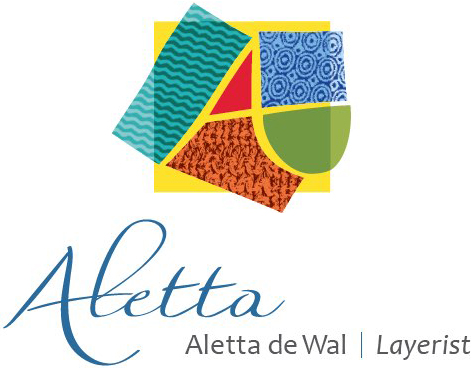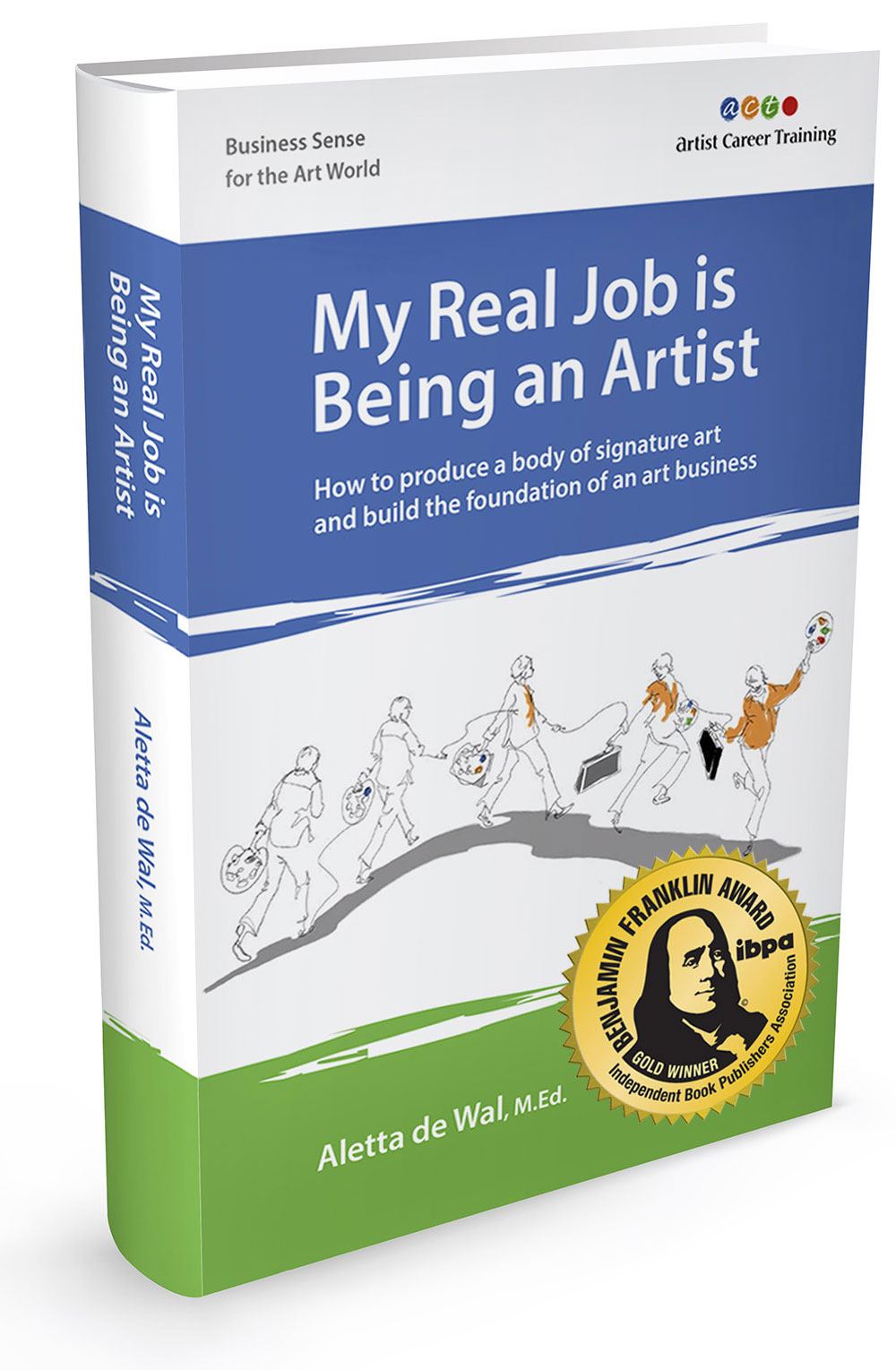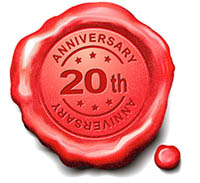The Inside Story of Marketing the Art of Chuck Jones with Robert Patrick
![]() THIS IS PART 1 OF 2.
THIS IS PART 1 OF 2. ![]() THIS IS PART 2 OF 2.
THIS IS PART 2 OF 2.
There is often additional information on the recording that is not in this written interview. Inspire yourself and listen while you make art.
My primary goal in these interviews is to inspire you with stories of people who make a living helping artists make a living making art and who consider it a real job. The art professionals I interview here have valuable tales to tell you about how to work with them.
___________________________________________
 Chuck Redux - www.LJE.comWith his background in French, English Literature and studies at the Goodman School of Drama at the Art Institute of Chicago, it seemed only natural that a career in the arts would suit Robert Patrick's creative temperament. Living in the arts community of Pilsen East on Chicago's near south side gave Patrick his first opportunity to work closely with young artists, bringing their work to the art marketplace through gallery, showroom and collector placement. During this time he managed the showroom of famed Chicago interior designer, Hudson Brown, where he cut his teeth merchandising and designing window displays for this noted Chicago celebrity decorator.
Chuck Redux - www.LJE.comWith his background in French, English Literature and studies at the Goodman School of Drama at the Art Institute of Chicago, it seemed only natural that a career in the arts would suit Robert Patrick's creative temperament. Living in the arts community of Pilsen East on Chicago's near south side gave Patrick his first opportunity to work closely with young artists, bringing their work to the art marketplace through gallery, showroom and collector placement. During this time he managed the showroom of famed Chicago interior designer, Hudson Brown, where he cut his teeth merchandising and designing window displays for this noted Chicago celebrity decorator.
Patrick lives along the southern coast of Orange County with his life-partner of 29 years and two dogs, Billy and Joey, where he can be found indulging his passions for photography, writing and gardening.
I met Robert through LinkedIn and contacted him because of his compelling profile. Robert's career is a study in art marketing from many angles. Then I discovered the connection with Chuck Jones and my Saturday mornings watching the Roadrunner came right back to me.
A.C.T.: What prompted you to start your professional arts career? Please give us an idea of the various stages of your career, the highlights and lowlights, and what lead to each transition.
Robert: The assistant designer at an interior design showroom I managed bet me $5.00 that if I answered an ad from a gallery seeking an art consultant that they would hire me. I thought she was nuts, but it turned out she was right. The night before my interview, I read a Horizons magazine issue that was devoted to prints, without knowing how useful that would be. I took the $5.00 and the job with the largest print maker in the country. That was thirty-one years ago.
When I started selling art, I had no idea what I was doing, so I followed the lead of the gallery director who seemed to just talk to clients about this and that and somehow managed to get a check at the end of their discussion. My background was in the arts (theater, dance, and the visual arts) and many of my friends at the time were recent graduates of the School of the Art Institute of Chicago - so I was able to draw on a vocabulary and a way of looking at a work of art that worked well with my style of personal engagement.
Shortly after I began working at the gallery, I was promoted to assistant director and I held that position for the next few years. I worked for Circle Fine Art, at the time the largest publisher and representative of artists in the country, with over thirty galleries and hundreds of artists in their collection. It turned out to be a great training ground for anyone who wanted a career in an art gallery. About five years after being hired the director moved and I was promoted to Gallery Director.
During the eleven years I worked at Circle Gallery (Chicago, Maui, Orange County) I received two prestigious company awards, one for merchandising and the one that meant the most to me, the Madison Avenue Award - given to a gallery director who created an experience of taste, knowledge and sophistication for collectors. I wrote guidelines for display that were used company-wide and audio taped presentations on select artists that were used as the standard for all of the galleries. Throughout my tenure with the company, I traveled to other Circle galleries assisting with exhibitions, sales training and human resource issues. One summer I spent a month in New York as guest director for the company's unique Jack Gallery in SoHo.
I left Circle Fine Art to work for Linda Jones, the founder of the eponymous company, publisher and representative of her father, the legendary animation creator, director, and a four-time Oscar recipient, Chuck Jones. At the time, they were beginning to move into retail with the opening of the Chuck Jones Showroom in Newport Beach. I'd met the Jones's during my time with Circle on several occasions and had always admired the way they conducted their business, and besides, who doesn't love Chuck Jones? To me, as much today as it was nearly 20 years ago when I began with them, he is the epitome of an artist. Classically trained in figure drawing at the Chouinard Art Institute in Los Angeles (now CalArts in Valencia), Chuck was a master of multiple media, including oil and watercolor. He always said that he was amazed that he found a job where they actually paid him to draw.
There's a wonderful quote from Robert Frost about vocation and avocation: "My object in living is to unite my avocation and my vocation as my two eyes make one in sight." There are not many artists who can claim that - and Chuck Jones accomplished this combination in his lifetime!
I spent several years working as a consultant in the showroom and then was tapped to head-up a new division of their wholesale business that was devoted to fine art and photography. My background served me well in that capacity and even after the company focused again on its core business, animation, I continue to draw on my background in the arts, whether it's working with our dealers, marketing the business, assisting with retail growth and development, art direction, or blogging, all of it seems to be a part of who I am.
Select highlights include art directing, co-editing and publishing in one month the coffee table art book "Stroke of Genius: A Collection of Paintings and Musings on Life, Love and Art," organizing the Linda Jones Enterprises 30th Anniversary exhibit at International Art Expo, and organizing and planning the touring exhibit of photographer Phil Borges's "Enduring Spirit" to multiple galleries and venues nationally and internationally.
I've been lucky and it's unusual to have had only three jobs in my career. It's been my good fortune to be where I needed to be when the next job was ready. If you do something well, enjoy and get what you need from it - economically, socially and philosophically there's no reason to move around.
A.C.T.: What are the best shows you saw recently? What made it best?
Robert: One exhibit that has resonated with me since 2010 is the John Baldessari retrospective, "Pure Beauty" at LACMA. I think Baldessari is a genius. His quirky sense of humor, his irreverence, his depth of knowledge fascinate me, as well as his way of seeing the world and ability to offer that to the viewer simply and elegantly. His way of showing you what you should have been looking at is without peer in a contemporary artist. There is a touch of tragedy running through his work that makes it deeper than it might first appear.
We just had the grand opening for the Chuck Jones Experience in Las Vegas at Circus Circus followed shortly thereafter by the Chuck Jones Center for Creativity's (a non-profit) grand-opening and fund-raiser at our new 8000 square foot facility in Costa Mesa, California. There's something to be said about being in a room filled with people celebrating the joy of art. Every once in a while you have to pinch yourself and wonder at this many people being in the same room at the same time for this one reason.
Linda Jones Enterprises is still the publisher and representative of the art of Chuck Jones. We are in our 34th year, a very long time in the art world and I just celebrated my 19th anniversary with them. We occasionally work with other artists and this being Chuck's centennial year we are beginning an homage series of interpretative works by a variety of other artists, all focused on the art and films of Jones.
A.C.T.: What do you collect? Where do you like to see art?
Robert: I have very "catholic" tastes and being a friend of artists for years hasn't been bad for my collection either. I collect mostly figurative imagery, but only because I can't afford the abstract art I would like to own, such as Rauschenberg, Motherwell and Still. I try to find art that speaks to me in much the same way. I have many landscapes and like to be able to imagine myself inside the painting, walking and dreaming in it to be transported somewhere. My home is hung floor-to-ceiling with paintings, drawings, watercolors, prints, and photography by a variety of artists.
I follow the advice I've given collectors throughout the years, "buy what you love and what you can afford, trust your instincts, accept guidance when it's given, but always make up your own mind." What matters is that you've found something that creates a connection, brings you joy, or intellectual stimulation. I pity the person who doesn't like to look in people's windows at night and see what kind of art they have on the walls. I can't imagine what it might be like to live without art as visual stimulation.
I always try to buy something when I'm traveling; it's a much better 'picture' of the trip than a snapshot of me standing in front of the ______.
And in answer to the second question: I see art everywhere I go.
 Chuck Jones by Wile E Coyote ©Warner Bros. ©Photo by Karsh
Chuck Jones by Wile E Coyote ©Warner Bros. ©Photo by Karsh
A.C.T.: What projects are you working on now?
Robert: I've curated several Chuck Jones exhibits, including one at the Port of Portland; another at the Franklin Park Conservatory in Columbus, Ohio; and a major exhibition of his work at the Chuck Jones Experience, an interactive museum of creativity in Las Vegas at Circus Circus that opened in January, 2012.
The museum exhibit is a little like walking around in Chuck Jones' head. It's a little goofy, very intellectual if you want it to be, fun and funny. Chuck always felt that no matter who you are, you are a creative person. Often as children grow up, creativity gets tamped down. They may get "overly praised" or get no praise - either one kills the joy of creativity. Chucks' thoughts about creativity are all about nurturing and gentle guidance.
Aside from the exhibit, there's a learning center that's free. The plan is to have full time artists there. We are reaching out to schools in the area to bring tours.
For the opening we had a big "boom" in the form of a big bouquet of Acme TNT. We thought that was better than cutting a ribbon with scissors.
We worked with a talented design team who did theme parks and parade floats. John Ramirez, the head designer had worked with Chuck in the early nineties. The project began 3 years ago with our thoughts about what the exhibit would look like. I started digging around in the Chuck Jones archives of art, telegrams, clippings, and photographs and started seeing connections. Other threads were telling stories through Chuck's oil paintings; his art about his daughter - and one thing led to another. We wanted to tell the story of how to draw, why you include certain things and how you put them together, what's funny and what's not.
A.C.T.: How does writing fit into your personal and professional life?
Robert: Some form of self-expression has been a part of my life for as long as I can remember. I like making things and I consider writing making something. It satisfies that urge to get whatever is inside out.
Of course, now with blogging and the like, it's kind of wonderful to have an audience and get feedback (or not, which happens too). Professionally, I write the blog, and all marketing material, including press releases for the company. I often provide structure to written material being produced by other people in our organization. I know them so well that I can express in their voice.
I got some great advice from a collector friend who said to make sure to use every character and space to tell your story in your profile on LinkedIn. It changed the way LinkedIn works for me - and it's how we met!
A.C.T.: What makes an artist professional enough for you to represent them in the homage project? What mistakes do artists make and how could they overcome them?
Robert: Every artist should be proud of his or her work but ego sometimes gets in the way. They have to temper that with how they present themselves. Be open to suggestion. Be sensible about where you fit in, what your skills level is, and what you are saying with your work. The most common mistake artists make, that I have observed in my career, is not following submission guidelines.
We only work with artists who have a proven track record of sales, a history of multiple exhibits and/or they have attained a certain level of success in the art of the animated film as a director or animator of significant sequences and films. Their art must make cross-over sense, i.e. how are they going to interpret the work of Chuck Jones and does it fit in with what we're hearing people want and are buying. We have a circle of artist friends and now we are tapping them.
A.C.T.: Please describe a typical day and a typical month so readers can understand how you manage your time, money and energy.
Robert: The best way to do that I've found is to make a quick list the night before of what you need to accomplish the next day. Of course the art business changes daily and other thing will come up. It doesn't have to be a complete list, but a general outline and priorities seems to make the day a lot easier to navigate.
Before I leave for work, I try, not always successfully, to take a moment to visualize my day and what I want to accomplish. When I lived in Chicago, it was easy to do this while I rode the subway or the bus to work, but now that I drive I've found I have to squeeze that "quiet" time into my early morning.
At Chouinard Arts Institute, now Cal Institute for the Arts, Chuck was told "You birds have 10,000 bad drawings in you. Start getting rid of them now and we'll all be the better for it." I almost always try to get rid of the most noxious tasks first thing so I don't have to worry about them all day long. If you keep pushing them off they weigh heavily on your mind and affect the things you do for the rest of the day. The more you get rid of the bad things the better you will be at the rest.
I try to move forward, not backward or sideways. Things completed make sense to me and feel good. I asked Judith Bledsoe, an artist friend who lives in Paris "How do you know when you're done with a painting?" She answered: "You don't but at some point you have to decide if it's mature enough to let it go."
As boring as it sounds, I try to be as methodical as possible, completing tasks, checking them off a list (virtual or real). I absolutely am a committed list maker, with occasional flurries of post-it notes attached for decoration (!) Usually those are a result of new tasks, unexpected tasks resulting from impromptu meetings or doorway chats, although I try to avoid the unexpected by planning, planning, planning, but in the art business the unexpected is often the best part of the day, is it not?
Because many of my tasks come from different departments, I am usually working on projects at least a month in advance. Although some of the details may change, usually our goals will remain the same.
A.C.T.: What peak moments have you had as an art professional?
Robert: There have been several peak moments:
In the eighties I did three art events in six weeks - one every two weeks. Big deals, expensive artists. It was the most successful series of shows I have ever done until the Chuck Jones experience. I think it was because there was no room for error because there was so much to be done. This was all before computers and faxes had just started to be used so we were trying to figure out how that worked into selling art. We hand addressed envelopes to 2000 people for each show. Timing, the installation, and handling the artists were all important to staying focused on the shows and sales.
I had the great fortune to curate and install a major museum collection of California plein-air artists in the collector's home. The project extended over several days, but every moment, each decision and the final results were very satisfying.
Watching Chuck Jones receive his Lifetime Achievement Oscar in 1996, was awesome, and although not "art" related, well, you know I worked for him, he rode in my car, I had been to his house and had dinner with him. That personal connection made his achievement that much more touching and significant.
The one thing that is always a peak moment for me, and one that I never tire of experiencing, is when someone acquires a work of art and the joy they exude when they take it in their hands or watch it installed in their home. It's a pretty wonderful moment, isn't it? Artists should think about the fact that the transfer of yourself to another person can be a very intimate and meaningful experience and one that should not be taken lightly. Art is such a powerful and positive force in our world that living without it seems inconceivable to me.
A.C.T.: How do you define success and how do you celebrate it?
Robert: Money is the short answer. It is, after all, still a business and regardless of the pleasure it brings, earning a decent living, one that allows you to enjoy what you do enjoy in life, is a great way to celebrate your success.
The definition of success is constantly shifting, but the one part of it that I think has always been the same for me is if I can answer in the affirmative the question, "am I happy?" I think fulfillment in your chosen line of work is as important as the livelihood it provides you.
A.C.T.: What obstacles have you encountered in your business and how have you handled them?
Robert: Can you imagine how boring life would be if there were no obstacles to overcome? We are all in sales because every day is a negotiation about something or with someone. The art business is a roller coaster and you have to be prepared for the lows. Everyday is filled with minor and major obstacles; you are always negotiating your way through life (personally and professionally). I'm from the school of answering objections before they're asked.
Obviously, the economy has wreaked havoc with the art business, luxury goods being the first item crossed off anyone's list of things they think they can't do without. And it would be disingenuous of me to say otherwise (or anyone, for that matter, in spite of what success they may be achieving in today's market.)
This happened when I was in Hawaii before, during the Gulf War in the early nineties with the oil embargo, and tourism falling off the charts affected many galleries who depended on the travelers as their market. We handled that by becoming a bigger part of our collector's lives. Every person who walked into the gallery counted. If the staff member who spoke with them could not complete a sale, they introduced the people to a colleague. It was amazing how many sales happened because one person wasn't the right person for the collector but another one was. It required stepping away from ego and towards every person who walked in.
A lot of galleries have closed in the past 3-5 years, but I feel that they were Sunday-owners (like Sunday painters), having come to the business from other disciplines and not skilled enough to negotiate the intricacies and often mercenary nature of the gallery business. Many were unprepared and should not have been dealers in the first place. They may have had the passion for the art but not for the business - and it is a very difficult business. If an artist finds a good gallery owner, treat them with the utmost respect because they really work very hard to make it. Collectors are an interesting group of people and so are artists. They don't always come together in the way that you want them to and then you add the challenge of rent and other expenses.
This last time galleries have hunkered down and found ways to stand out. They marketed differently and focused on their core businesses. Because of the entrepreneurial aspect of the business of art, I do believe that we are more adaptable, creative and motivated (beyond the money) to stay afloat. I try to leave the visionary part to the company president and let him warn us of what's ahead and then do whatever needs to be done to get past that.
The first question I ask anyone who says, "I'm thinking of opening an art gallery," is "Are you crazy?" because you sort of have to be. It's not an easy business. You have to be quick, adaptable, and have a bit of a fortune-teller's skill to survive.
A.C.T.: What opportunities has a professional approach to your career brought you that you might otherwise not have had?
Robert: My success in Chicago allowed my partner and me to fulfill a dream and move to Maui and continue to work for Circle Fine Art. I don't think it would've happened had my abilities and success had been less than what it was. And I also believe that my transition from Circle to Linda Jones was a direct result of my professionalism and success. (P.S. sometimes I am funny too.)
A.C.T.: Who are your role models and mentors? What was the best advice they gave you?
Robert: All of the things I bring to my job are so odd - English, French, theater and dance, waiting tables, story telling and meeting strangers, hanging out with friends who were artists - it's like I went to school to work in the art business. At the time I didn't know that because no one said "This is what you need to know." You lead your life and you don't know that you're preparing for something.
One thing my mother could do that always amazed me as a child, was her ability to talk to anyone about anything at anytime. She was unafraid of strangers and her willingness to engage in a conversation with them was a powerful lesson. She would occasionally travel for work and come back having made friends with whom she carried on a long distance relationship for the rest of her life. I try to be fearless when I am talking to strangers. I must admit that I am not nearly as good as she was, but it was an untaught lesson that has resonated positively through my career (and life.)
When I was fresh out of school, I worked for Arnie Morton (the founder of Morton's Steakhouse) at his eponymous restaurant on State Street in Chicago. It was a "see and be seen" restaurant with lots of celebrities. Again, like with my mother, it was an untaught lesson that I took with me: how to put on a show and still run a business, how to entertain your clients so that they would be repeat clients, how to get them to give you their money in exchange for a good time. I can also layout an amazing buffet table (extra bonus points!)
David Vice, a talented manager at Circle Fine Art really helped me focus on things I didn't think were strong points at the time. He was very good at getting us to do things that were good for the gallery and for us, leading us all down the path to success. When he gave me the Madison Avenue Award, the glass decanter came with this quote etched into it: "Quality is never an accident: it is always the result of high intention, sincere effort, intelligent direction and skillful execution: it represents the wise choice of many alternatives." I like to think that is how I conduct my professional life.
A.C.T.: What is your marketing strategy? What promotional materials and actions do you use most often? How do you incorporate social media into your strategy?
Robert: Our marketing strategy is "Stay in front of everybody."
Social networking has definitely changed the marketing landscape. We utilize our Twitter, Facebook, YouTube (to a lesser degree) and blog (Chuck Redux, http://blog.chuckjones.com/) as launching pads for events, new art releases, commentary and information. Craig Kausen, the president of the company has over 100,000 Twitter followers. They love him and do whatever he asks. We have about 30,000 Facebook fans - mostly by word-of-mouth which has always been the best marketing tool. We pay attention to Yelp. We had a comment on the Las Vegas show that was neither positive nor negative but Craig answered it right away because it only takes one unhappy person to spoil your reputation. You need to monitor what people are saying about you; reward the praise and find out why people are not happy.
We always stick with declarative statements and we are not afraid to ask our collectors to do something within a certain amount of time. We try to engage them without selling something all of the time, so when we do there is better response.
We have almost entirely eliminated printed material and utilize web pages and e-blasts to display the art we have for sale, the artists we are promoting and the events we are planning. We do send out at least four or five 6" x 11" postcards via snail mail each year as reinforcement of our online marketing. We are currently updating our website to make it more 'alive,' more of an entity that can engage clients in a conversation about the art they would like to collect.
When we do use print material, we do it as a step in the process of preparing the client for every next step. For example, "I am going to mail you a packet and in a few days I am going to call you to talk about it. You'll come back for the show on February 2nd." There are no surprises and they'll expect the marketing action when you do it.
A.C.T.: What changes have you experienced in the art market you serve and how have you navigated them? What lessons have you learned?
Robert: When Chuck Jones died in February of 2002, it was devastating emotionally...we'd all worked together for so many years. It's a family-owned business and we were and are a close-knit group.
The immediate reaction from many of our dealers and collectors was to buy, buy, buy. That lasted well into the following year. As a company we did not raise the suggested retail prices after his death; we felt that it was ethically important not to take advantage of the situation as so many others in our market have under similar circumstances. About two years after his death, the market for his art started to diminish, we scaled back our production of limited editions; slowing frequency of releases, reducing edition sizes, gradually increasing pricing, to sustain interest and demand. Our cautious and prudent approach was beginning to bring us the return we knew it would when the housing market crashed. Such are the vagaries of being in the art business.
Many of our dealer galleries went out of business. Those that were left tightened their belts, stopped stocking and consigning art; instead they worked with the inventory that they had on hand, as we did. As for many people selling luxury goods over the past few years, you've had to find the strength deep inside of you to weather the downturn in sales...constantly looking for marketing opportunities, whether they were cross-promotional in nature or on your own. What has mattered and has made a difference for those who remain is this slimmed down work ethic. I believe many of us make different choices now about how to spend our time and our money, having learned what brings you a greater return.
Recently I had a discussion with a bright young woman artist in L.A.'s hip Echo Park. We were talking about staying in front of the people who count, who will make a positive difference in your life. She was organizing an art walk and I asked her who she was inviting. She was handing out flyers, ads on Craig's List, bars, restaurants, etc. So I asked her who she and the other artists would really like to see come to the art walk; she said gallery owners, museum curators. I asked: are you sending them personal invitations? Uh, no, they weren't. How are they supposed to know you even exist if you're not including them in what you are doing? Are you going where those people are going - art openings, wherever and giving them your card, inviting them to a studio visit, engaging them in conversation without selling them something? These are all ways to get yourself where you want to be, but you have to be determined, polite and engaging. She got it.
It's been the same for us. Although our dealer network is smaller now, our dealers are much more focused on what works for them - their focus is more intense and intent on a goal. In our own retail galleries we are doing the same thing. And you know what? Business is coming back to us. Last year was much improved over the year before and the outlook for 2012 is even better (regardless of what the Mayans may think.)
A.C.T.: What advice would you pass on to artists who want to be represented by a gallery or fine art publisher?
Robert:
- Don't believe your mother - she's going to love every thing you do. Listen to someone who knows what they are doing and find people to give you that kind of critique.
- Know your place in the market. Be reasonable about your talent and where you think you should be represented. At the same time always be proud of your work and be prepared to stand behind it.
- Accept advice if offered by a gallery owner/director and give it a try...they are the professionals that stand between you and success, it's possible that they know something that can benefit you. Try it or move on (politely, of course.) Think clearly about how your art fits in with the collection of the gallery. Check out their shows, how they mount an exhibit, introduce yourself without trying to sell them. Invite them to your studio. Follow their submission guidelines. If packages arrive and we haven't asked for them, they go right into the trash. If they have the temerity to call, "sorry - I don't know who you are."
- Get involved in your local arts programs.
- Make sure your local news outlets hear about your shows, exhibits, and open-studio events.
- Word-of-mouth can be your best calling card.
- You go where you want to be. If you want to be in a museum, offer to help with one of their programs for the public. You need to participate. You would be doing something really good for other people and for yourself.
- Be ready to let your work go. Don't show it unless it's available to be sold.
As Einstein said "The intuitive mind is a sacred gift and the rational mind is a faithful servant. We have created a society that honors the servant and has forgotten the gift." Remember the gift your art gives.
A.C.T.: How you feel artists can benefit from the types of programs, services and products we offer at Artist Career Training and The Art Business Library?
Robert: Listen up, artists! You can't have enough help. Let someone help you become the sales person you need to be. Aletta knows her stuff and she is that person. And I'm not just saying that to curry favor with her.
What if I told you that you could have a successful career as an artist, but you'd have to give me your first-born? In most cases, you'd refuse, wouldn't you? What I'm saying is: there are no trade-offs on the way to success, you cannot wait for luck or fate or fortune to fall into your lap; you have to make it happen for yourself. You're going to have to work for it and if that's the case then you should find the most efficient approach to that success.
Aletta can help you create a plan so that you can focus more of your attention on creating. Who wouldn't want that? Her approach is simple, but not juvenile. Her programs play to your strengths, but do not ignore your weaknesses. Her plan, well, the fact is Aletta has a plan and there's no one I know who can't benefit from a well thought-out life/career plan.











